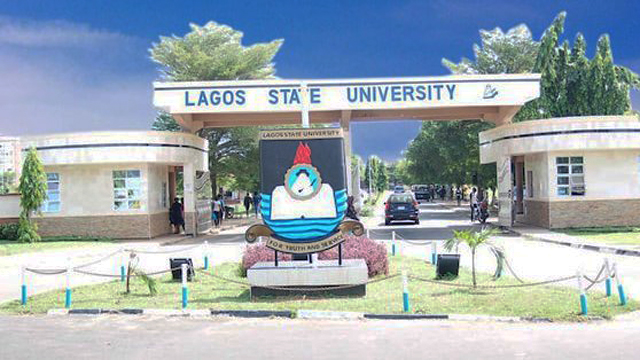To drive a successful and sustainable digital transformation in Nigeria’s education sector, a strategic roadmap is essential. This roadmap must be comprehensive, involving key stakeholders across various sectors, and focusing on the core pillars that will facilitate a digital shift. Below is a proposed roadmap consisting of five critical steps aimed at addressing Nigeria’s unique challenges while aligning with global digital education trends.
Step 1: Developing a National Digital Education Strategy
The foundation of Nigeria’s digital transformation in education must be a well-structured National Digital Education Strategy. This strategy should outline the vision, goals, and objectives of the nation’s digital education agenda, with a focus on bridging the digital divide and fostering inclusive education. The key elements of this strategy include:
-
- Vision and Objectives: The strategy should have a clear vision that articulates Nigeria’s commitment to creating an inclusive, technology-driven education system. The objectives should focus on enhancing access to education through digital tools, improving learning outcomes, and preparing students for the digital economy.
- Role of Stakeholders: The government should lead the initiative, with support from the private sector, particularly technology and telecommunications companies. Partnerships with international organizations, such as UNESCO and UNICEF, can also play a crucial role in mobilizing resources and expertise (Osuola, 2020). Collaborative efforts across various ministries, educational institutions, NGOs, and industry leaders will be vital to the success of this strategy.
Step 2: Massive Investment in Digital Infrastructure
Digital infrastructure is the backbone of any successful digital education transformation. For Nigeria to move forward, the government and private sector must prioritize investments in internet access, stable electricity, and the distribution of technology devices. Key components of this investment include:
-
- Prioritizing Internet Access: High-speed internet must be accessible in all schools, including those in rural and underserved areas. This will require the expansion of broadband infrastructure across the country. The Universal Service Provision Fund (USPF) and telecommunications companies can play a key role in this process by providing affordable internet packages for schools.
- Improving Power Supply: Ensuring a reliable power supply is critical for sustaining digital learning tools. Solar-powered technology solutions may provide a viable alternative, especially in areas with unstable electricity.
- Technology Distribution: Investment in affordable devices such as laptops, tablets, and projectors are crucial. Partnerships with device manufacturers can ensure that students and teachers across Nigeria have access to these essential tools.
Step 3: Teacher Empowerment and Training
For digital transformation to succeed, teachers must be adequately trained and empowered. Nigeria needs to invest in nationwide digital literacy programs that enable educators to use technology confidently in the classroom. Specific strategies include:
-
- Digital Literacy Training: The government should develop comprehensive training programs that equip teachers with the skills needed to integrate digital tools into their teaching practices. This training must be ongoing to keep up with technological advancements.
- Incentives for Teachers: Teachers should be incentivized to embrace digital tools and innovation. These incentives can include professional development opportunities, salary bonuses, and career advancement linked to digital proficiency.
Step 4: Curriculum Reforms and Content Creation
A modernized curriculum that emphasizes STEM (Science, Technology, Engineering, and Mathematics), digital literacy, and entrepreneurship is essential for preparing Nigerian students for the future. This requires a significant overhaul of the current curriculum to include key subjects that align with the demands of the digital economy.
-
- Adopting a Modern Curriculum: The revised curriculum should integrate courses on coding, data science, artificial intelligence, and entrepreneurship. Such subjects will prepare students for jobs in the tech industry and encourage innovation.
- Content Creation: Locally relevant and culturally appropriate digital learning materials must be developed. Nigerian-cantered e-learning resources can help contextualize learning and make it more relatable to students, promoting better engagement. Open Educational Resources (OERs) should also be encouraged to reduce the cost of textbooks and educational materials.
Step 5: Strengthening Policy and Regulatory Frameworks
A successful digital transformation in education cannot occur without strong policy and regulatory frameworks that support its implementation. This requires reviewing existing policies and introducing new ones that foster digital education.
-
- Drafting Comprehensive ICT Policies: The Nigerian government must develop and enforce clear and comprehensive ICT policies tailored to the needs of the education sector. This includes policies that ensure digital education is a priority at both federal and state levels, alongside guidelines for implementation, monitoring, and evaluation.
- Adequate Funding and Monitoring: The government must allocate sufficient funding to support digital education initiatives. This funding should be channelled into teacher training, infrastructure development, and curriculum reforms. Monitoring systems must be established to ensure policies are properly implemented and adjusted as needed.
A strategic roadmap for Nigeria’s digital transformation in education must involve a comprehensive approach that addresses infrastructure, policy, curriculum reform, and teacher empowerment. By leveraging the support of both the private and public sectors, Nigeria can position itself to harness the full potential of digital education and make significant strides in improving its educational outcomes. The success of this transformation will ultimately depend on the commitment of all stakeholders to collaborate and execute the roadmap effectively.
GLOBAL BEST PRACTICES IN DIGITAL EDUCATION
To explore how Nigeria can achieve a wholistic digital transformation in education, it is essential to examine successful global practices in digital education. Countries such as Finland, India, and Estonia provide valuable case studies that highlight the role of technology in improving access, learning outcomes, and efficiency in education. Each country’s experience offers distinct lessons that can be adapted to Nigeria’s unique context.
Case Study 1: Finland’s Digital Education Model
Finland has long been regarded as a global leader in education, and its approach to digital transformation is no exception. The country has fully integrated technology into its education system, from primary to tertiary levels. Finland’s success stems from its emphasis on equal access to digital resources, teacher training, and the use of personalized learning tools.
One of Finland’s key strategies is ensuring that all schools, regardless of location, have access to high-speed internet and digital devices. The Finnish government has partnered with local municipalities to provide schools with the infrastructure and resources necessary for digital learning. Additionally, the country’s curriculum emphasizes digital literacy from an early age, teaching students not only how to use digital tools but also how to critically evaluate online content.
Teacher training is another cornerstone of Finland’s digital education success. Continuous professional development programs ensure that teachers are proficient in using digital tools and integrating them into their lesson plans (Aarnio, 2021). Moreover, the Finnish education system promotes personalized learning by leveraging digital platforms that adapt to students’ individual learning needs and paces. These platforms, combined with a student-cantered teaching approach, enable students to take ownership of their learning.
Lessons for Nigeria: Finland’s model highlights the importance of equitable access to digital infrastructure and the centrality of teacher training in driving digital transformation. Nigeria can learn from Finland’s commitment to ensuring that all schools, including those in rural areas, have the necessary digital resources. Additionally, Nigeria should prioritize teacher training programs to equip educators with the skills needed to integrate digital tools effectively into the classroom.
Case Study 2: India’s Digital Initiatives in Rural Education
India, like Nigeria, faces significant challenges in providing quality education to rural populations. However, through government-backed programs and innovative public-private partnerships, India has made substantial progress in using digital tools to improve educational access in underserved regions. One such initiative is the Digital India campaign, which aims to bridge the digital divide by expanding internet access and providing digital resources to rural schools.
India’s e-learning initiatives focus on low-cost, scalable solutions tailored to the needs of rural communities. For example, the government’s SWAYAM platform offers free online courses for students and teachers, providing a wealth of educational content accessible from anywhere in the country. Another successful program is the eVidyaloka initiative, which connects volunteer teachers with students in rural areas via digital classrooms. By leveraging the internet and video conferencing technology, eVidyaloka enables students in remote areas to receive quality instruction from experienced teachers (Pal, 2021).
India’s success in rural digital education is also attributed to its public-private partnerships. Collaborations between the government, non-governmental organizations (NGOs), and tech companies have facilitated the distribution of digital devices, the development of e-learning content, and the establishment of digital infrastructure in rural areas.
Lessons for Nigeria: India’s approach underscores the importance of low-cost, scalable digital solutions and the role of government-led initiatives in driving digital education in rural areas. Nigeria can benefit from adopting similar programs that provide affordable access to digital resources and internet connectivity in underserved regions. Moreover, leveraging public-private partnerships can help Nigeria overcome infrastructure and funding challenges.
Case Study 3: Estonia’s Digital Education Success
Estonia, a small nation with limited resources, has transformed itself into one of the world’s most digitally advanced societies. Central to Estonia’s success is its comprehensive education reform, which focuses on digital literacy, e-learning, and the integration of technology into all aspects of education. Estonia’s journey to digital excellence is a prime example of how even resource-constrained countries can achieve significant digital transformation.
Estonia’s digital education strategy began with the Tiger Leap initiative, launched in the late 1990s, which aimed to equip schools with computers, internet access, and digital content. Today, Estonia boasts universal internet access in schools, and digital tools are a core part of the curriculum. Students learn programming, coding, and digital citizenship from a young age, ensuring that they are prepared for the demands of the digital economy.
In addition to providing digital infrastructure, Estonia has invested heavily in e-learning platforms and digital content creation. The government developed the eKool platform, which serves as a digital learning management system that connects students, teachers, and parents. eKool facilitates communication, tracks student progress, and provides access to digital resources, making education more efficient and transparent.
Lessons for Nigeria: Estonia’s experience demonstrates that a clear, long-term vision for digital education, coupled with strategic investments in infrastructure and digital literacy, can lead to transformative results. Nigeria can draw on Estonia’s approach by developing a national digital education strategy that includes universal internet access, a focus on digital literacy, and the creation of locally relevant e-learning platforms.
Finland, India, and Estonia each offer valuable insights into how countries can successfully implement digital transformation in education. These case studies illustrate the importance of equitable access to digital infrastructure, teacher training, public-private partnerships, and a national commitment to digital literacy. By learning from these global best practices, Nigeria can develop a tailored approach to wholistic digital transformation that meets the needs of its diverse population.
CONCLUSION
In this paper, I have made a compelling case for the wholistic digital transformation of Nigeria’s education system. It is evident that the country’s current educational infrastructure and curriculum are ill-equipped to meet the demands of a 21st-century, technology-driven global economy. The key arguments presented highlight the urgent need for a comprehensive strategy that integrates digital infrastructure, teacher training, curriculum reform, policy frameworks, and investment in digital content. Without these essential components, Nigeria risks falling further behind in the global race for digital literacy and innovation.
The long-term impact of digital education in Nigeria cannot be overstated. A successful transformation will not only address the immediate gaps in access and quality of education but also bridge the skills gap between the academic system and the needs of industries. By equipping students with critical digital skills such as coding, data analysis, and artificial intelligence, Nigeria can cultivate a workforce ready for the digital economy. Furthermore, digital education will help address socio-economic disparities, providing equitable access to education for rural and underserved communities, ultimately contributing to national development and global competitiveness.
This is not a task that can be delayed. Policymakers, educators, and private stakeholders must act with urgency. A call to action is made to the Nigerian government to implement a national strategy for digital education, supported by robust policy frameworks and adequate funding. Educators and institutions must embrace digital tools and innovative teaching methodologies, while private stakeholders, including technology companies financial institutions, must contribute to infrastructure development and partnerships that can scale digital learning nationwide. It is only through collective effort that Nigeria can transform its education system and position itself as a leader in the global knowledge economy.














